Apple iPhone 4S: Thoroughly Reviewed
by Anand Lal Shimpi & Brian Klug on October 31, 2011 7:45 PM EST- Posted in
- Smartphones
- Apple
- Mobile
- iPhone
- iPhone 4S
History loves to repeat itself, and even Apple isn’t immune to the yearly cycle of rumor and release. Leading to each year’s iPhone refresh, excitement, rumors, and hype build to a fever pitch, features and designs are added into an increasingly unrealistic combination, and finally everyone is silenced at the device’s eventual unveiling.
Today we’re looking at Apple’s latest iPhone refresh, the iPhone 4S (henceforth just 4S).
The review has to start somewhere, and the path of least resistance is usually just exterior appearances - in this case the 4S is easy to go over. The 4S keeps the overall form factor and design of its predecessor, but to call it identical to the iPhone 4 isn’t entirely correct. Instead, the 4S borrows its stainless steel band break locations from the CDMA iPhone 4, which we talked about extensively when it finally released. The GSM/UMTS iPhone 4 previously had three notches, where the CDMA iPhone 4 and 4S have a total of four.
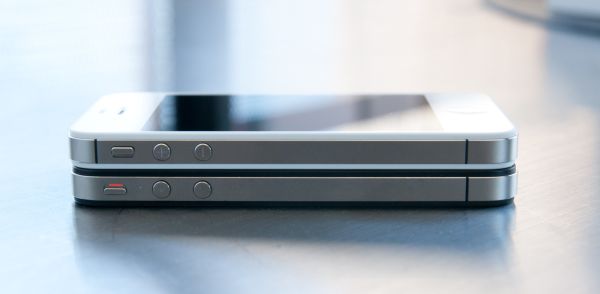
Top: iPhone 4S, Bottom: iPhone 4
The long and short of this change is that the notches have been moved around to accommodate a design with two cellular antennas. One is up at the very top, the other is at the very bottom - the two are the small U shaped portions. The result of this change is that the 4S has a very symmetrical design, as opposed to the GSM/UMTS 4’s asymmetric layout.
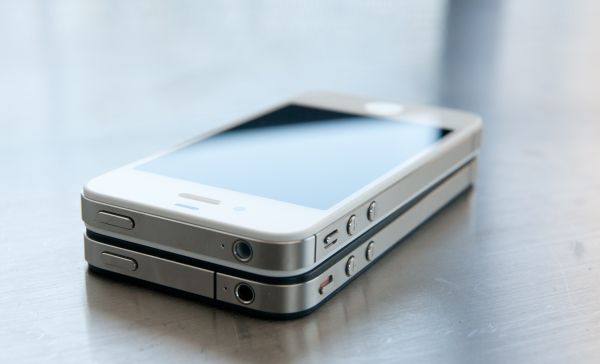 Top: iPhone 4S, Bottom: iPhone 4
Top: iPhone 4S, Bottom: iPhone 4
Just like the CDMA iPhone 4, the 4S also moves the vibrate/lock switch down the device just slightly to accommodate the new break for the top antenna band. This is the physical change that breaks compatibility with cases designed for the older GSM/UMTS iPhone 4. If you recall previously, however, Apple refreshed its bumpers with a new “Universal” line around the time of the CDMA iPhone 4 launch. At that time, case makers also followed suit with a larger vibrate/lock switch port. The result is that if you have a “universal” case created after the launch of the CDMA iPhone 4, you likely won’t need a new one for the 4S.
I say likely because some cases that cover the front of the 4S and are universal might not work as well owing to a small change in the placement of the 4S’ ambient light sensor. It’s going to be a case by case basis to determine which 4 cases that cover the front of the display work with the 4S.
The rest of the 4S exterior is superficially identical to its predecessor, which has become something of a point of contention for shoppers who like being able to identify themselves as owning a 4S, as opposed to a 4. There are, however, subtle differences you can leverage to tell the 4S from its two 4 brethren. The 4S includes the regulatory (FCC, recycling, European Conformity, e.t.c.) logos below its model numbers and FCC ID. The CDMA 4 doesn’t include those logos. Again, the GSM/UMTS 4 is alone with its three-notch stainless steel bands. It is admittedly curious that Apple hasn’t decided to make some other larger change to distinguish the 4S from the other two - there’s no mention of 4S anywhere on the phone. The iPhone 3G and 3GS were famously distinguished from each other by the inclusion of chrome iconography on the back. I fully expect Apple to update their identifying iPhone page with basically the above information at some point in time, but to say that the 4S is identical to the previous device is disingenuous.
The 4S design is without a doubt, however, an evolution of the CDMA iPhone 4’s design. Like the latter, the 4S includes the same improved vibration unit instead of the counterweight vibrator that most smartphones include. The result is a virtually silent, completely smooth vibrate, instead of the louder rattle and sharp acceleration that accompanies the counterweight vibration. The result is much less conversation-interrupting noise when the 4S vibrates during a call, and less intrusive notification.
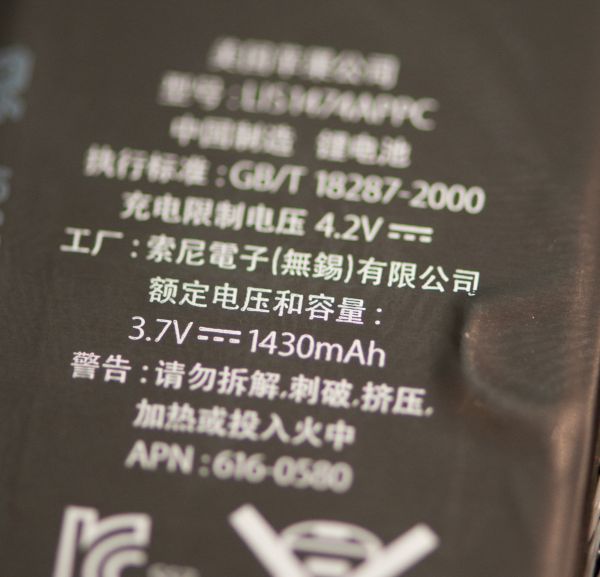
Battery capacity up to 1430 mAh
The other subtle change is an extremely small jump in battery capacity, from 1420 mAh in the 4 to 1430 mAh in the 4S. This is a very small change that boosts the capacity in watt-hours from 5.25 to 5.3. In addition the 4S puts on a little bit of weight, from 137 to 140 grams, but again nothing major.
Even the 4S packaging is basically the same as prior versions, including the same design and contents. Inside you get the phone, dock cable, headset mic, and the same smaller 5V, 1A charger that came with the 4.
| Physical Comparison | |||||||
| Apple iPhone 4 | Apple iPhone 4S | HTC Sensation | Samsung Galaxy Nexus | Samsung Galaxy S 2 | |||
| Height | 115.2 mm (4.5") | 115.2 mm (4.5") | 126.3 mm (4.97") | 135.5 mm | 125.3 mm (4.93") | ||
| Width | 58.6 mm (2.31") | 58.6 mm (2.31") | 65.5 mm (2.58") | 67.9 mm | 66.1 mm (2.60") | ||
| Depth | 9.3 mm ( 0.37") | 9.3 mm ( 0.37") | 11.6 mm (0.46") | 8.94 mm | 8.49 mm (0.33") | ||
| Weight | 137 g (4.8 oz) | 140 g (4.9 oz) | 148 g (5.22 oz) | 135 g | 115 g (4.06 oz) | ||
| CPU | Apple A4 @ ~800MHz Cortex A8 | Apple A5 @ ~800MHz Dual Core Cortex A9 | 1.2 GHz Dual Core Snapdragon MSM8260 | 1.2 GHz TI OMAP 4460 Dual Core Cortex A9 | 1.2 GHz Exynos 4210 Dual Core Cortex A9 | ||
| GPU | PowerVR SGX 535 | PowerVR SGX 543MP2 | Adreno 220 | PowerVR SGX 540 | ARM Mali-400 | ||
| RAM | 512MB LPDDR1-400 | 512MB LPDDR2-800 | 768 MB LPDDR2 | 1GB LPDDR2 | 1 GB LPDDR2 | ||
| NAND | 16GB or 32GB integrated | 16GB, 32GB or 64GB integrated | 4 GB NAND with 8 GB microSD Class 4 preinstalled | 16GB or 32GB NAND integrated | 16 GB NAND with up to 32 GB microSD | ||
| Camera | 5MP with LED Flash + Front Facing Camera | 8MP with LED Flash + Front Facing Camera | 8 MP AF/Dual LED flash, VGA front facing | 5 MP AF with LED flash, 1.3MP front facing | 8 MP AF/LED flash, 2 MP front facing | ||
| Screen | 3.5" 640 x 960 LED backlit LCD | 3.5" 640 x 960 LED backlit LCD | 4.3" 960 x 540 S-LCD | 4.65" 1280 x 720 Super AMOLED | 4.27" 800 x 480 SAMOLED+ | ||
| Battery | Integrated 5.254Whr | Integrated 5.291Whr | Removable 5.62 Whr | Removable 6.475 Whr | Removable 6.11 Whr | ||


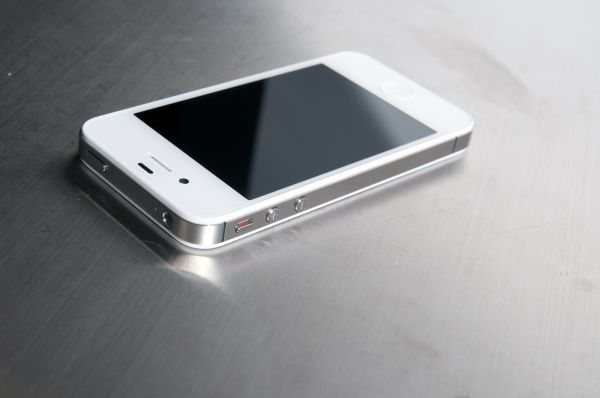

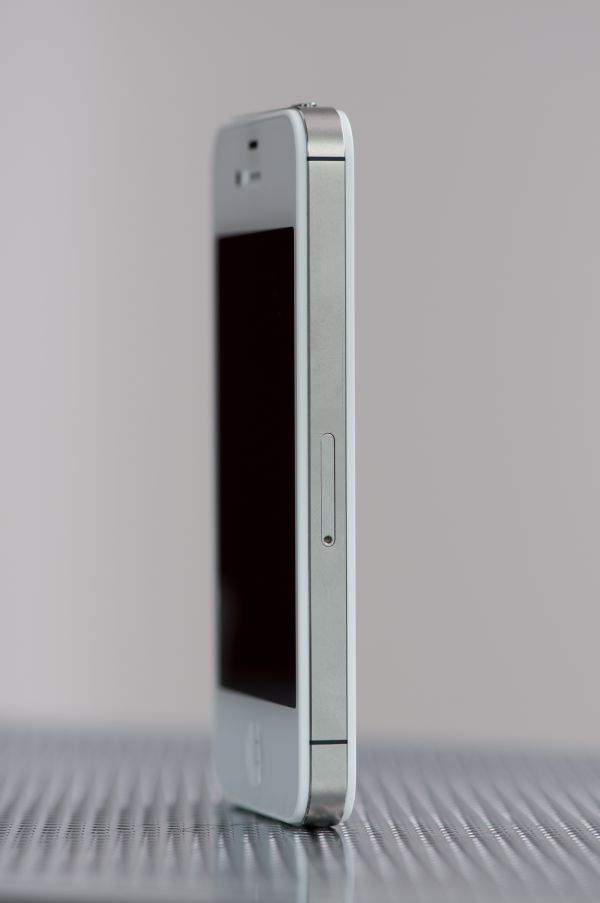














199 Comments
View All Comments
a5cent - Wednesday, November 2, 2011 - link
Nobody will use it to support Windows Phone. Ryan was certainly talking about Windows 8 and tablets. WP8/Apollo will run on Qualcomm's S4 SoC and on nothing else. An OS that can make assumptions about the hardware it is running on can include performance optimizations that would be impossible to do otherwise, and is also much easier to test. Apple and Microsoft seemingly agree that this is the better approach.Penti - Wednesday, November 2, 2011 - link
Actually they will of course, see Brians latest pipeline post http://www.anandtech.com/show/5038/stericsson-anno...Windows Phone 7-series devices need DirectX/3D and SM3.0 support, it has been discussed before and it's precisely this that prompts them to release products on 544. ST-E will produce SoCs for Windows Phone in cooperation with Microsoft and in partnership with Nokia which they have supplied before and has an extensive partnership and relationship with. At least they would hardly care for Windows 8 when choosing parts. They will hardly support DX9 and SM3 on Mali-400. They wouldn't bother if it was just for Windows for ARM any way. Even though Ryan referred to Windows 8 it doesn't make my post any less relevant and justified.
dagamer34 - Monday, October 31, 2011 - link
My best guess is that other SoC vendors would have had a hard time selling a SoC with that big a GPU until Apple did it. They don't want to loose the "speeds and feeds" game. We'll probably see more chips with larger dies in the future to compete with what Apple comes out with.Anand Lal Shimpi - Tuesday, November 1, 2011 - link
This is extremely accurate. The best thing Apple could have done for competition was ship an iPad with a 122mm^2 SoC inside.Take care,
Anand
Penti - Tuesday, November 1, 2011 - link
Not to mention every other application for ARM SoCs in this multimedia heavy world. It's more the tablet itself that drove this as well as other media player applications and all the other applications that aren't as power constrained as mobile phones. That was set out for for some time.mashimaroo - Monday, October 31, 2011 - link
i gave my spare case to my gf thinking it would fit right on until i noticed the vibrate lock switch was moved. My friends thought it was a defect but i knew there was no way. Unfortunately i had to buy another case after already shelling out $700. =( still im happy. The mirror ability is great and i can watch all my shows straight off my iphone to my aaxa p4 pico projector. All i had to get was the vga cord from the apple store for another $30.pretty much plug and play after though. ANGRY birds 80 INCHES instead of 3.5 inches. I'll admit its pretty fun to watch the giant birds fly across my walls.
kishorshack - Monday, October 31, 2011 - link
Really loved this reviewkudos to anandtech team
medi01 - Tuesday, November 1, 2011 - link
1) Ridiculous BS sentences about "improved vibration" that obviously come straight out of Apple's marketing mouth2) No real comparison vs competitors (guess what, AMOLED screens wipe the floor with iphones, no wonder)
No real comparison, but thorough kissing all over apple's butt. Formidable review, indeed....
doobydoo - Tuesday, November 1, 2011 - link
If there weren't charts showing the faster CPU/GPU combination as compared to all the other Android competition.If there wasn't a thorough analysis of the screen, showing that the iPhone 4S trades blows (winning and losing) vs the best Android can offer 9eg EMOLED).
If there wasn't a thorough analysis of wifi speed, battery life, as compared to other Android phones...
You would have a formidable comment, indeed....
rd_nest - Tuesday, November 1, 2011 - link
Where did it show faster CPU?